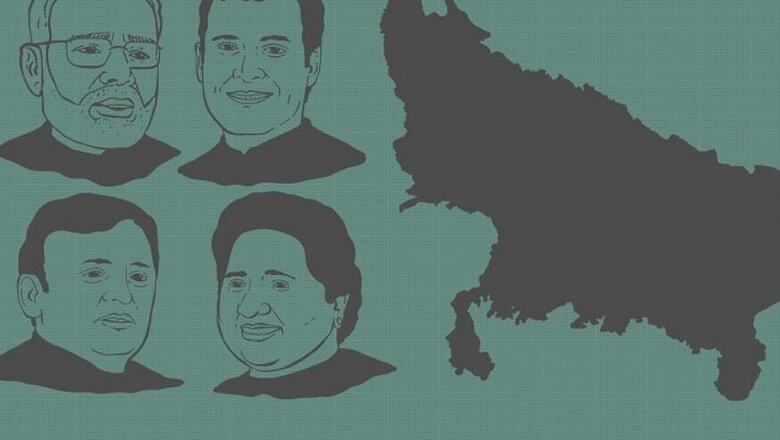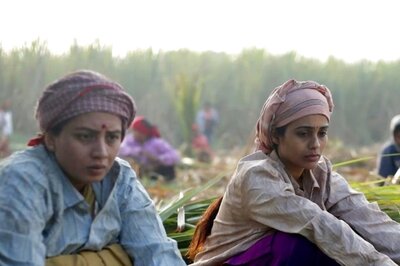
views
All the four seats were won by the Bharatiya Janata Party (BJP) in 2014 with a massive 44.86 per cent of votes. But unlike any other region in the state, the other parties — Samajwadi Party (SP) and Bahujan Samaj Party (BSP) or the Congress — were not able to dent the BJP’s support base in the region, even in the 2017 state elections.
The BJP, in 2017, successfully carried on its momentum in Bundelkhand (UP) from the 2014 Lok Sabha polls and bagged all the 20 assembly seats in the region. The party, in fact, marginally increased its vote share in the region to 45.01 per cent. Vote share for the BSP in the same elections was 22.47 per cent whereas SP and Congress, who fought the elections together, received 24.32 per cent if the votes.
Fewer number of seats and a comparatively smaller geographical area makes Bundelkhand (UP) a perfect case for a one-way swing. Therefore, it shouldn’t be surprising that BJP’s 2014 sweep in the region was not a one-off incident. The party had merely repeated its feat achieved in 1991 and 1998 Lok Sabha polls.
BJP dominated the region almost throughout the 90s. Beginning from 1991 Lok Sabha elections — when it sprang on to the political scene post the Ram Janmabhoomi movement — the party won all the four seats in Bundelkhand (UP) in 1991, won all except Banda (BSP won this seat) in 1996 and again secured a landslide in 1998 elections.
Farm Distress
Agriculture in India is largely dependent on monsoon rains because of lack of sufficient irrigation facilities. Bundelkhand, like Maharashtra, witnesses significant variations in rains and, therefore, is a region prone to frequent droughts.
Although, the region received a decent rainfall last year — after witnessing rain deficits over the last couple of years — resulting in good harvest, there are several farmers’ issues which remain unattended.
Mahendra Singh Rajput, a farmer from the Lalitpur district of Jhansi Lok Sabha constituency, whom News18.com spoke with over phone, said while the government did raise the support price for the harvest, the benefits did not reach those who needed it the most.
“By the time the government authorised centres start buying the crop, small and marginal farmers would have already sold their harvest because they couldn’t get a fair price for it, and are left with nothing to sell. It is only the middlemen and influential people who benefit from the government subsidy,” Rajput said.
Inability to pay loans is yet another problem for the rural population in Bundelkhand, most of which are taken from informal sources, according to Rajput.
Sanjay Kumar, professor and director at Centre for Studies of Developing Societies (CSDS), an organisation in the field of political research, had earlier told this reporter that farm distress could possibly have more impact in Uttar Pradesh compared to any other state. “See, if in a state, even though there is farm distress and people are looking for change, voters who may have wanted to vote for someone except the BJP may still vote for the saffron party as they don’t see an alternative. But it’s not the case in UP. There people see an alternative,” Kumar had said.
Caste Demographics
Bundelkhand (UP) has a marginal Muslim population which makes the community politically nearly insignificant compared to other parts of the state. The region, however, has a decent concentration of Scheduled Castes — nearly a quarter of the population — a vote base that the SP-BSP alliance might want to target. Both the parties are contesting two seats each as per the seat sharing pact. While SP will contest in Banda and Jhansi, BSP will field candidates in Jalaun (reserved) and Hamirpur.
Apart from these, on a constituency level, Brahmins have a substantial presence in Banda and Hamirpur where Lodha community also has a significant presence. Kurmis and the Kushwaha community make up a crucial chunk of the electorate in Banda and Jhansi respectively. Similarly, while Yadavs are a factor in Jhansi as well as Jalaun, Rajputs have an influence in all but Jhansi.
With caste playing an important role during the elections, different set of equations may favour one party or the other.
Vote Arithmetic
When it comes to pure vote-share arithmetic, will the SP-BSP alliance make any difference this time around?
As it turns out, SP and BSP would’ve won Banda and Jhansi — in terms of combined vote-share — had they tied up in 2014. The BJP had more number of votes than that SP and BSP combined in Hamirpur and Jalaun in 2014. However, in 2019, even this scenario is only possible if there is a complete transfer of votes for the allies.
At the same, despite its poor record, what will be interesting to see whether Congress is able to make any gains here or not given its recent success in MP assembly elections.
Read all the Latest News, Breaking News and Coronavirus News here


















Comments
0 comment